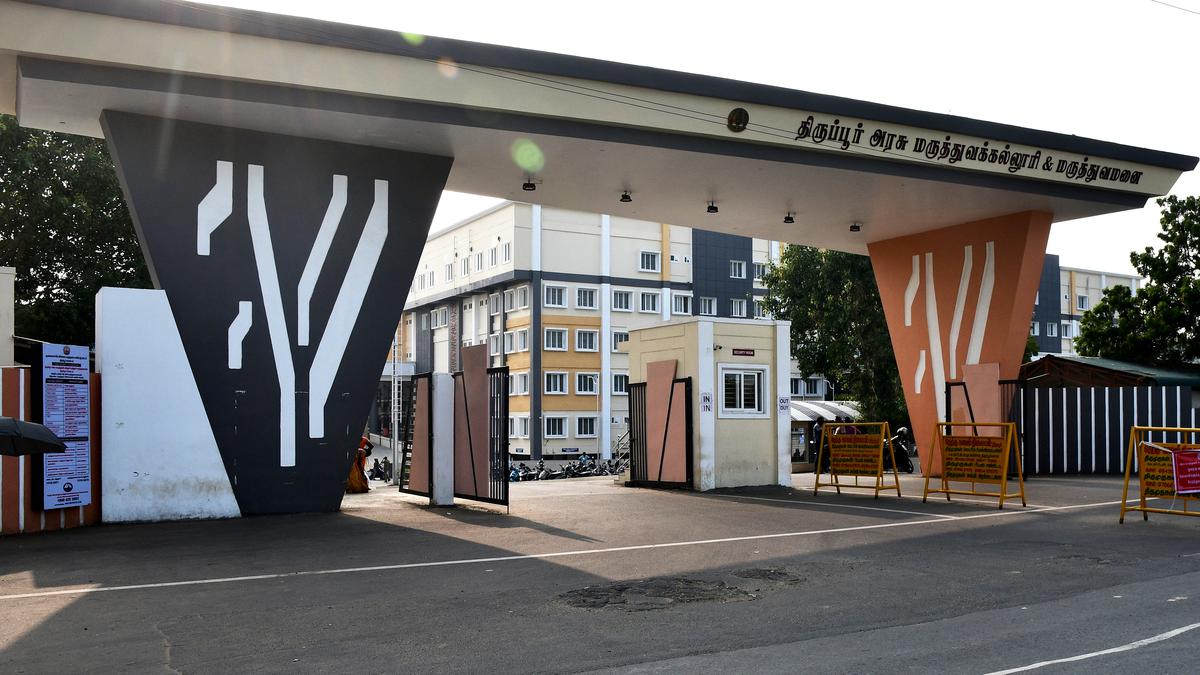
Significant progress in Cancer Block project at Tiruppur GH
The Hindu
Progressing towards a state-of-the-art Cancer Block in Tiruppur, TN, under public-private partnership & Namakku Naame Scheme.
The major project for establishing a state-of-the-art Cancer Block 0n the premises of the Government Medical College Hospital, Tiruppur, under public-private partnership, deriving the utility of Namakku Naame Scheme of the State government, is making significant progress.
Having already made the one-third public contribution under the government scheme for purchase of medical linear accelerator (LINAC) device (through Tamil Nadu Medical Services Corporation) at ₹28 crore and for construction of the bunker building for the machine, the Rotary Public Welfare Trust on Thursday gave the Corporation authorities a cheque for ₹5 crore as one-third public share for construction of the 100-bedded hospital building for the Cancer Block.
Designated Member of Tamil Nadu Medical Council A. Muruganathan, past Rotary Governor and past IMA (Indian Medical Association) president, handed over the cheque to Mayor N. Dinesh Kumar in the presence of Commissioner Pavankumar G. Giriyappanavar.
On its part, the Public Works Department opened the tender process for construction of the bunker building. In all likelihood, the completion of the construction would coincide with the installation of the machine to be brought from USA, said R. Murugesan, Dean of Government Medical College Hospital, Tiruppur.
The Cancer Block would be a full-fledged unit with PET SCAN and other vital equipment, said Project Coordinator R. Sureshkumar, Clinical and Radiation Oncologist, Government Medical College Hospital, Tiruppur.
The Cancer Block is the outcome of the determination of Mr. Muruganathan to create a comprehensive facility to treat the disease in Tiruppur due to the increased case load in the district accounting for a chunk of workforce from across the country.

Hampi, the UNESCO-recognised historical site, was the capital of the Vijayanagara empire from 1336 to 1565. Foreign travellers from Persia, Europe and other parts of the world have chronicled the wealth of the place and the unique cultural mores of this kingdom built on the banks of the Tungabhadra river. There are fine descriptions to be found of its temples, farms, markets and trading links, remnants of which one can see in the ruins now. The Literature, architecture of this era continue inspire awe.

Unfurling the zine handed to us at the start of the walk, we use brightly-coloured markers to draw squiggly cables across the page, starting from a sepia-toned vintage photograph of the telegraph office. Iz, who goes by the pronouns they/them, explains, “This building is still standing, though it shut down in 2013,” they say, pointing out that telegraphy, which started in Bengaluru in 1854, was an instrument of colonial power and control. “The British colonised lands via telegraph cables, something known as the All Red Line.”

The festival in Bengaluru is happening at various locations, including ATREE in Jakkur, Bangalore Creative Circus in Yeshwantpur, Courtyard Koota in Kengeri, and Medai the Stage in Koramangala. The festival will also take place in various cities across Karnataka including Tumakuru, Ramanagara, Mandya, Kolar, Chikkaballapura, Hassan, Chitradurga, Davangere, Chamarajanagar and Mysuru.








